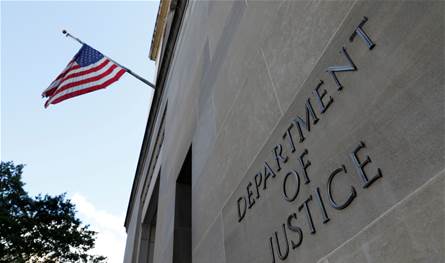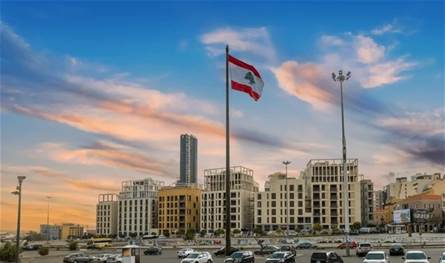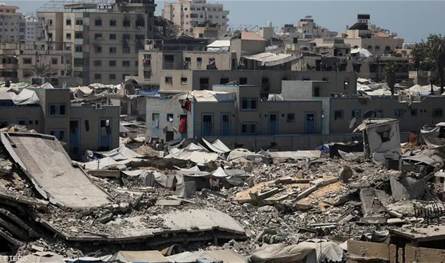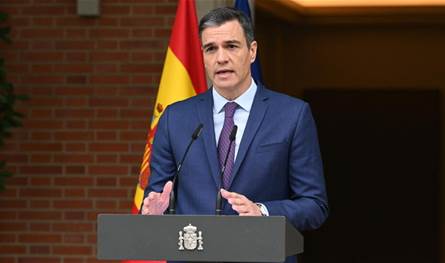30 Lebanese visual artists who emerged in the last 30 years

As part of our documentation of the state of culture and arts in post-war Lebanon, we present to you today a list of 30 Lebanese visual artists who have emerged in the last 30 years, most of whom have had a presence abroad and many of whom have received awards and honors. As with all our lists, we are not presenting a list of the best visual artists, but rather a list of 30 painters (some of whom also excelled in sculpture) who presented their works to us after 1990. We have chosen them from different generations, with different career paths and different styles of creative work. We have not included any highlights from the biographies of all the artists, as we sometimes preferred to talk about the characteristics of their art or to include some of what they said to the press or what the press said about them, because we found that this expresses them best.
We excluded from the list some artists who have left us and others who are still with us. Their names remained prominent in Lebanese and international exhibitions after the war, but they all made their fame before the end of the war (Salwa Rawda Choucair, Hussein Madi, Hreir Diyar Bikrian, Wajih Nahle, Moussa Tayba, Abdul Hamid Baalbaki, Shafiq Abboud, Hassan Jouni, Joseph Tawfiq Matar, Huguette Khoury Caland…). Here we must pay tribute to the Basbous family who excelled in sculpture and raised the name of Lebanon globally in this field. We have adopted alphabetical order in our list according to the first names of the selected artists.
1- Arwa Saif El-Din
Born in Beirut in 1953. Her personal artistic work includes spiritual and architectural elements, searching for moments of interiority, focusing on the ambiguity between interior and exterior in abstract architectural spaces. The hidden dimension in “space” remains the main research in her art. Seifeddine’s first solo exhibition was held at the UNESCO Palace in Paris in 1988, followed by two solo exhibitions in 1996 and 2012 in Beirut. She has also participated in numerous group exhibitions in Lebanon and abroad.
2- Osama Baalbaki
Born in 1978. Abdo Wazen wrote about him on the margins of his exhibition “Watercolors”: “The painter’s color brush has a measure of delicacy surrounded by the intuition of the first impression, spontaneous and quick. But the brush does not abandon its broad stroke and its smudge even if it seems light in impact, relieved of the repulsive technical precision. The watercolor painting here does not abandon its memory, which is the painter’s memory and the memory of his brush (…) The scenes that Baalbaki paints are not devoid of contemplation, even if fleeting, nor of the inner gaze, nor of the psychological “hesitations” that contribute to enriching the delicate and dense lyricism that the paintings proclaim. Perhaps Osama, with this lyricism, is following the path of poets whose hymns rise from the depths of the inner wound, which is their wound and the wound of existence at the same time.”
3-Ayman Baalbaki
Born in the village of Adaisseh in 1975, he graduated from the Faculty of Fine Arts at the Lebanese University and holds a PhD in Image and Contemporary Art from the University of Paris 8. He has participated in group exhibitions in the Middle East, Europe, Argentina and Nigeria. He has also won several awards in Lebanon, Nigeria and France. Baalbaki’s paintings bear the scars of his childhood in Lebanon during the civil war. In a constant quest to bear witness to the violence of this war and overcome its effects, these works range from installations made up of different objects (old signs, fruit tables, torn posters…) whose function has been redefined, to expressionist paintings that show the ruins of a city or unknown faces covered by a veil or keffiyeh symbolizing the concealment of the identity of both the victim and the executioner. His paintings have achieved record numbers at public auctions, most notably a painting entitled “Let a Thousand Flowers Bloom” for $206,000, and another entitled “Tower of Babel” which was sold for $485,000.
4-Bernard Renault
Born in Deir al-Qamar in 1959. He was born into a house where the family loves art. His father is the artist and painter Asaad Renno, founder of the Michael Ange Academy of Fine Arts. He studied architecture and interior design and has received many certificates of appreciation, shields, cups and medals from Lebanon, Arab and European countries. He is famous for direct painting in record time. He is the owner of 5300 paintings and has participated in 150 group exhibitions and 17 solo exhibitions inside and outside Lebanon. Some of his works are currently on display in the Presidential Palace.
5-Tweeting Darghouth
Born in 1979. Holder of a postgraduate diploma in drawing and painting, from the Institute of Fine Arts at the Lebanese University. Completed her third year at the National Higher University of Decorative Arts, Art-Espace Department in Paris. Participated in many joint exhibitions and workshops in Beirut, Amman and Paris.
6-John Boghossian
Born in Syria in 1949 and based in Belgium, he is one of the few artists worldwide who has experimented with fire and smoke in his works. Fire is his preferred artistic language, and he uses a wide range of brushes and lamps as his tools. The burning objects often include different media such as canvas, paper, books, chairs and paintings, sometimes leaving behind patterns of holes, using distinctive and varied techniques. After his exhibition at the 57th Venice Biennale, Boghossian exhibited fire-drawn paintings in Beirut in 2018. The exhibition was extended for a week due to its great success and by public demand, with more than 6,000 people visiting in the first days.
7- Beautiful playgrounds
Born in 1948, he is the son of the village of Baysour. There is no doubt that he is one of the most prolific contemporary Lebanese artists in terms of production and exhibition. He has accomplished a lot in post-war Lebanon, which has increased his brilliance. He started his art early, winning the Sursock Museum Sculpture Prize in the early 1960s. He studied and graduated in Algeria, where he exhibited about 100 works in 1974. The first lines of his new artistic world formed an artistic vision that was neither Eastern folkloric nor Western, and with a technique that seemed contemporary. Malaeb intertwines and blends with his elements, as he draws with trees and colors with stones, to find himself in front of paintings with the spirit of murals, in which the awareness of the present accumulates with a legacy left in his soul by the Pharaohs, Babylonians and Sumerians. He presented a painting entitled “Lebanon’s Revolution” shortly after the October 17, 2019 uprising.
8- George Al-Zaatini
Born in Zgharta in 1946, he pursued private studies in drawing and painting under the supervision of the artist Saliba Douaihy. He completed many church murals, the most important of which are the biography of “Saint Charbel”, the biography of “Blessed Rafqa” and the stages of “The Passion of Christ.” He held more than 30 individual exhibitions and participated in many art gatherings in Lebanon and abroad.
9-Gerard Avedisian
Born in Beirut in 1944. A multi-talented Lebanese artist, he began his artistic career in Beirut theater in the seventies and has not stopped creating since then, whether on stage, in directing or acting. He holds a PhD in theater directing from the Soviet Union Institutes. His career as a visual artist began in 2005 when one of his paintings, “The Little Soldier from Smyrna”, was selected for the fall exhibition organized by the Sursock Museum. The imaginations of the East and its aesthetics are depicted in his paintings, with artistic embellishment with an Arab orientalist flavor in its various ancient colors, and with a distribution teeming with hot and cold color movement, to narrate the viewer with a visual movement that chronicles a civilization that dazzles the eye with its colors and aesthetic sense.
10- Dima Raad
She holds a PhD in Art History and a Master’s degree in Archeology. Their boldness and large spaces characterize her paintings. She began her works on the themes of the war she experienced and then expanded them to express human emotions in their various forms. In 2020, the Minister of Culture honored Raad with an award for her overall artwork, paintings, exhibitions, and the successes she achieved in Lebanon, Arab and foreign countries, her participation in international exhibitions, and her selection several times as a member of the judging committees, in addition to her distinguished role in activating the artistic and cultural movement, including her establishment of the Baalbek International Symposium in 2018.
11- Rafi Tokatlian
Born in 1957. He grew up in a family of artists. A painter and sculptor, Tokatlian gained his artistic education by delving into mythologies that led him towards classical Greek and Roman art, then he became interested in the Renaissance, especially the works of Donatello. Hierome Bosch was a great source of inspiration for him, and he also learned the expressionist method from Rodin and Giacometti. From here he defines himself as a classical mythological surrealist artist.
12- Rudy Rahma
Born in Bsharri in 1967, he is a sculptor, painter and poet. He studied at the Lebanese Academy of Fine Arts – ALBA, then specialized in plaster and sculpture in Florence and then studied in Paris. He had exhibitions in many countries around the world, including the Emirates, France, Belgium, the United States, Singapore and Australia. Rahme broke the world record for the largest wooden sculpture, and his sculpture The Trinity, located in the Cedars of God Forest in Bsharri, which is 39 meters high, entered the Guinness Book of Records. He believes that painting, poetry and sculpture are a trinity that intertwine inseparably.
13-Raouf Rifai
Born in Baalbek in 1954, he has distinguished himself over the years as one of the most influential and creative contemporary painters. He studied fine arts at the Lebanese University and later worked in the archives at the Sorbonne University in Paris. Like many artists, Rifai draws his inspiration from the environment around him, especially the issues that concern his society. His artworks move between reality and the world of imagination, guided by conscience and feelings. His works are acquired by many institutions, universities and museums, especially in Paris, Damascus, America, Beirut and Egypt.
14-Reema Shahrour
Born in 1986. She is a London-based artist and researcher whose work spans painting, collage, lectures, puppets and toy design. Her work focuses on the relationship between art and myth, aiming to blur assumed cultural boundaries and provoke prior knowledge. Her work has been exhibited in numerous cities including Berlin, London, New York, Dubai, Beirut and Paris.
15- Zeina Al-Khalil
Born in 1976. Received her MFA from the School of Visual Arts in New York in 2002. Khalil works in a variety of forms including painting, installation, performance, mixed media, writing, video and collage. Her work has addressed issues of violence, war and love. She has had solo exhibitions in the UK, Nigeria and Lebanon.
16-Zeina Assi
Born in 1974. Graduated from the Lebanese Academy of Fine Arts. In 2011, Christie’s described her as an emerging contemporary artist on the international level. Assi has participated in international contemporary art festivals in London, Paris and the United States and has presented many solo exhibitions since 2008 in Lebanon, the Emirates and Bahrain.
17- Saeed Baalbaki
Born in 1974 in Lebanon. In 2007, he moved to Berlin, where he completed his studies, won awards, and presented exhibitions there, as well as in Paris, New York, London, and Dubai. He launched the “Buraq” project, an installation that he presented in stages. In this work, Baalbaki questioned the writing of history, museum science, and anthropology by presenting works that he made himself and attributed to a history dating back to the beginning of the first millennium, the time of Buraq. The nightmares of war never left the contents of Baalbaki’s works, which varied in installation, drawing, and engraving. On the contrary, he presented his nightmares in forms and conditions in several previous exhibitions, some of whose titles we will mention: “Belts” and “In a Bag.”
18- Samir Shamoon
Born in Chouf in 1952. He started painting with oils at the age of thirteen, then immigrated to Canada in 1973, where he obtained a bachelor’s degree in electronics engineering, and a master’s degree in communications from the School of Applied Arts in Montreal. He had solo exhibitions and participated in group exhibitions in both the United States and Canada, and won several awards from both countries. One of his paintings was hung in the Presidential Palace in Baabda.
19-Charles Khoury
Born in 1966. Self-made, he entered the field of visual arts in a big way since 1991. He was asked in an interview in 2008: Are you haunted by the obsession of the “life” of the painting and its continuity over time? He answered: “Arts develop rapidly, as you know, schools, trends and approaches, whether in Europe or America. Nothing cancels the painting (…) It remains that in art there is also “craftsmanship” in addition to creative talent. In installation art, for example, there is no craftsmanship, and this constitutes a killer for this wave. I will not turn away from “making the painting”, and I do not have an obsession with the death of my painting. This is a conviction!”
20-Omar Fakhoury
Born in 1979. Mimosa Arawi wrote about him on the sidelines of his exhibition in 2016: “Lebanese artist Omar Fakhoury presents visitors to his exhibition with large-scale paintings made of acrylic. The works do not depict magical worlds or realistic tragedies, but rather place the visitor face to face, without any ambiguity or suggestion, before a harsh reality, as cold as the coldness of thick marble, under which the Lebanese people continue to groan, and participate in it at the same time, either in building and constructing or in refining its features.”
21-Lydia Moawad
Born in 1965. She considers herself to have been painting since she was born, as her grandfather is a jewelry expert, her mother paints, and each member of the Mouawad family has his or her artistic talent, so it was natural for Lydia to open her eyes to art and start painting from a young age. After Mouawad finished studying art at the Holy Spirit University of Kaslik, she became a well-known art teacher and visual artist, and her paintings are present in major exhibitions in Hong Kong, Florence, Italy, Canada, Tokyo, Kuwait, Dubai, and others.
22-Mazen Karbaj
Born in 1975. He is a painter, musician, writer, and son of actor Antoine Kerbaj and artist and poet Laure Ghrayeb. Since his early artistic career, he has chosen the path of modern art and the experimental improvisational style. Kerbaj has imposed himself through his drawings that he publishes in newspapers and on websites, which have made their way to exhibitions, and through his music that he plays in his concerts and tours with international musicians. In his career that began in 2000, Kerbaj has produced more than 14 books in the form of comic strips, including “This Story is Happening” and “People of Beirut.”
23-Mohammed Rawas
Born in Beirut in 1951. He only remembers drawing from his childhood. He joined the Institute of Arts in the early seventies and had great teachers such as: Yvette Ashkar, Halim Jordac, Rashid Wahbi and Amin Al-Basha. He ranked first in his four years of study. He traveled to Morocco to work as a drawing teacher. The first painting he painted was titled “Freedom” and he still keeps it in his home with other paintings from the same period. In his first exhibition, he was warmly received by critics and the public. He then exhibited his works in joint exhibitions in Britain and Lebanon. He is biased towards composition, mixing and diversification. His paintings require us to contemplate them longer than we do in front of ordinary paintings. Their beauty and intelligence reach us first, and we are late in guessing their precise mathematical and artistic equations. He may borrow details or symbols from paintings by previous artists or from comic books, and give them different roles in the scenario of his painting.
24-Marwan Sahmarani
Born in Beirut in 1970, he lived in Montreal where he completed his studies and practiced art. His works are characterized by a talent for conveying reality with an almost photographic accuracy. His art is inspired by the history of Western painting, which constitutes his main aesthetic reference, and by the tradition of Middle Eastern iconography, which is closely linked to the social and political turmoil that has plagued the region for thousands of years. He has held several exhibitions in Paris, Montreal, Beirut, New York and Ireland.
25-Mansour Al-Habr
Born in 1960. Hussein bin Hamza wrote about him in Al-Akhbar in 2015: “Calligraphy and collage are the basis of composition in Al-Habr’s work, and perhaps the relatively long presence of his paintings adjacent to texts and writings published in the cultural press made him somewhat content with the improvisational and spontaneous obsession of drawing.”
26-Nayla Qaei Saroufim
Born in Beirut in 1982. Graduated from the Lebanese Academy of Fine Arts. Since she was a child, she knew what she wanted to be: an artist. Sarofim’s personality is clearly present in her art and her work embodies her attraction to colors and her interest in all forms of expression, especially compositions. Her art is a rich mix of media. She has always been fascinated by the dialogue between drawing, illustration and painting. Her style is flexible and diverse, from abstract to realistic, and at times inspired by pop art and other cultures. Nayla Sarofim’s work has graced the walls of solo exhibitions including one in London in 2015. Her work has also been exhibited at the Beirut Art Fair, in Singapore and at the Asia Contemporary Art Fair.
27-Taher Success
In 2009, the autobiography “Al-Hijr” by the visual artist Najat Taher was published, in which artistic paintings are mixed with writing, starting with a picture of her great grandfather Kamel Al-Asaad, who belonged to the Anza tribes, and who had a great position in the early twentieth century, as he ruled as an obeyed master in Beirut over 20 thousand souls, applying the law and establishing or disrupting security. Then it moves to her mother, who used to tell them stories of the ghoul, and the writer moves between her childhood, her life, her artistic world, and her family history.
28- Nadim Karam
Born in Senegal in 1957. Artist, painter, sculptor and architect. Graduated from the American University of Beirut, he created several solo shows and exhibitions in Tokyo while completing his Masters and PhD in Architecture. He is mainly known for his conceptual work such as “Hilarious Beirut”, the “1993 Post-War Anti-Establishment” project for the reconstruction of downtown Beirut, and “The Cloud”, a huge public park resembling rainforests standing 250 meters above the ground, inspired by the city of Dubai. He has had several exhibitions in the Arab world, Europe and Asia, and his works have been included in international auctions and he has received numerous awards and accolades.
29-Nizar Daher
Born in Bekaa in 1951. He went to the Soviet Union in 1976. He joined the Academy of Arts – Repin Institute in Leningrad. Daher’s paintings, who had poetic and literary attempts, are characterized by precision in mixing colors, as well as transparency and poetic tendency. He focuses on lyricism in the scene, and on the chromatic, luminous and light dimensions. Daher is an artist concerned with the human being of the world of the marginalized and the oppressed wherever they are. He has a clear interest in the land, trying to shape it through spiritual and human coordinates and dimensions, not material geography, so the colors express hope and the future. Nizar Daher’s artworks are spread across many countries of the world, as his paintings are displayed in the Hermitage Museum in Russia, in the Research Museum of the Russian Academy of Arts and the Museum of Modern Art in Kuwait, as well as in private collections in Lebanon, Russia, France, America, Canada, Syria, Saudi Arabia, Dubai, Hungary, Bahrain, Kuwait and Morocco.
30-Walid Raad
Born in Chebanieh in 1967, he studied art at the Cooper Union School in New York, where he lives. He began his artistic career as a photographer before developing his work on photography towards reproducing artistic forms, taking into account the history surrounding them and the economic process that structures them. He first became famous through his work with the Atlas Group, which presented a special archive of photographs that dealt with the Lebanese war. After that, his works were presented in Zurich, London, Venice, and in a number of European and American museums. Years ago, the management of the Louvre Museum in France extended an open invitation for a period of three years to the Lebanese artist to cooperate with the museum and hold shows there that would give a modern flavour to the historical artworks on display.










